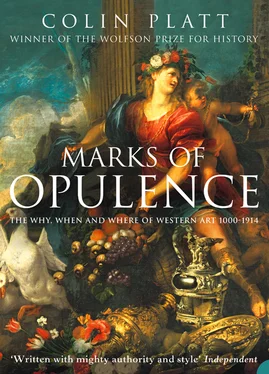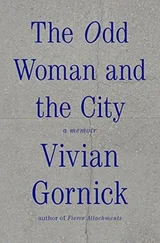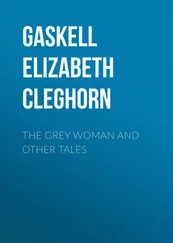We decided [Dunstable’s chronicler relates] that one portion of conventual dishes of every kind should be set before two brothers. Of the other economies made at that time [1294], as regards the number of dishes in the convent, as regards the almonry, the reception of guests, and the management of the household, you will find the particulars entered in the old book of obits [of this priory]. 32
Yet not one of these communities ever ran much risk of failure. And it was their still substantial wealth, over two centuries later, that made them such tempting targets for suppression.
What boosted building confidence – probably more in these pre-plague generations than at any other time – was an economic climate in which even the most feckless noble landowner could do no wrong. Few would ever match the hands-on farming skills of Walter de Burgo, custodian from 1236 of Henry III’s southern manors, who raised their value – through intelligent investment in marling, seed and stock – by as much as 70 per cent in just four years. 33 However, agricultural regimes on England’s great demesnes would continue to improve throughout the thirteenth century, assisted by the circulation of such contemporary manuals of good practice as the Seneschaucy and Walter of Henley’s Husbandry. And every Western property-holder, great and small, obtained at least some benefit from the flow of German silver which had begun to run again more freely after the new discoveries at Freiberg in 1168, irrigating every economy through which it passed. Most particularly, all employers throughout this period shared easy long-term access to cheap labour. And not only were wages falling in proportion to landowner wealth, but new levels of skill were developing in many crafts and trades as greater specialization was driven by overcrowding. Good craftsmen are rare at any time. But much rarer is the situation where high skills and low rewards coincide with unfettered wealth-creation at patron level. When, from the 1250s or even earlier, this began to happen in the West, what resulted was affordable quality in every category of the arts, unleashing ingenuity and invention.
Of the extremes of that invention – always expensive and occasionally perverse – there is no better example than the multiple shafts and complex tracery of a big ‘Decorated’ cathedral like Exeter, in south-west England, rebuilt almost entirely between 1270 and 1340 at a time of unprecedented landowner prosperity. Walter Stapeldon (1307–27), twice Treasurer of England and the refurnisher of Exeter’s choir, was probably the wealthiest of the five bishops who oversaw these works during the seven decades they took to complete. However, it is to Bishop Peter Quinel (1280–91) that the costly sixteen-shafted ‘Exeter pillar’ is usually attributed; and it was Quinel’s pillar that set the standard for all that followed. Two centuries before, at Anglo-Norman Durham, single drum columns had supported the arcades; at Transitional Canterbury, after the fire of 1174, paired ‘Roman’ pillars were chosen for the renewal of the choir; the builders of Early English Salisbury, not otherwise shy of decoration, believed four-shafted piers ornate enough; and even Henry III, never one to spare expense, had settled on piers of just eight shafts for Westminster Abbey. Quinel doubled that number to sixteen.
Exeter Cathedral is provincial work, over-ornate and alarmingly top-heavy. More refined in every way was the king’s new choir at Westminster, in the Court Style of Louis IX’s Sainte-Chapelle. Other characteristically tall and slender churches in the French rayonnant tradition had included Suger’s Saint-Denis (rebuilt from 1231), with Beauvais and Amiens, Tours and Troyes, Clermont-Ferrand, Saint-Thibault and Carcassonne; in Germany, Cologne and Strasbourg; in Spain, Toledo and Leon. Such huge devotional spaces required furnishings of similar quality. And Walter Stapeldon’s enormous throne at Exeter – ‘the most exquisite piece of woodwork of its date in England and perhaps in Europe’ 34 – was a typical response to that challenge. But with no lack of cash-rich patrons, excellence spread out in all directions. Medieval England is not generally remembered for its art. Yet it was in these decades in particular that English wood-carvers and stonemasons were at their most inventive; that English tilers and potters worked at a standard never afterwards repeated; that English brasses and memorial sculptures were at their liveliest and most original; and that English Court Style painters, as in the Thornton Parva and Westminster retables or the De Lisle and Queen Mary psalters, were the equal of any in the West. 35 Of the many English glazing schemes also commissioned in this period, none was more important than the glazing in 1305–40 of York Minster’s new rayonnant nave. Last to be completed were the cathedral’s three west windows. And so close were these in style and subject-matter to the best French paintings of their period that their makers were almost certainly Paris-trained. 36
English miniature-painters are known to have worked in Paris in the early fourteenth century. And some would have learnt their art in the thriving atelier of Jean Pucelle (d.1334), illuminateur to Philip the Fair and his successors. Pucelle, in his turn, had learnt from the Italians, while the Italians themselves, including the great Sienese panel-painter Duccio di Buoninsegna ( fl. 1278–1318), who was an important influence on Pucelle, took as much from the North as they gave back. For all, the common factor was extravagant commissions. Thus Duccio’s big Maestà , which took three years to paint, was commissioned in 1308 for the high altar at Siena Cathedral: the most prestigious location in the city. And the ingenuity and high invention of Pucelle and his assistants would have fallen far short of what they actually achieved had their virtuosity not been stimulated by the connoisseurship of Capetian kings and of the Valois who, from 1328, succeeded them.
Those increasingly sophisticated rulers of pre-plague France had owed their schooling in public patronage to Louis IX. And what St Louis did for the arts in thirteenth-century France had its closest parallel in the German empire of Frederick II Hohenstaufen. Frederick, as Holy Roman Emperor (1220–50), had only nominal suzerainty over Italy north of Apulia. He was never in total control of his German lands. Accordingly, it was in Frederick’s southern Italian kingdom, which he held absolutely from 1208, that he spent the greater part of his reign, creating a Court in Sicily and Apulia as brilliant as any that had surrounded the Norman ‘Great Count’, Roger I Guiscard, and his heirs. Apostrophized as Immutator Mundi (Transformer of the World), Frederick never lacked his admirers. He was a new David – claimed Henry of Avranches, one of the more extravagant of those – a new Charlemagne, a Caesar, or a Robert Guiscard; he was intellectually on a par with Plato and Cicero, Ptolemy, Euclid and Pythagoras. 37 The Franciscan Salimbene, in contrast, stressed the downside of his rule, where ‘all these parties and schisms [between Guelf and Ghibelline] and divisions and maledictions in Tuscany as in Lombardy, in Romagna as in the March of Ancona, in the March of Treviso as in the whole of Italy, were caused by Frederick, formerly called emperor.’ 38 Yet like him or not, there was no denying the force of the Emperor Frederick’s example, whether in the revival of antique scholarship or in the arts. ‘O fortunate Emperor’, exclaimed another of his circle, ‘truly I believe that if ever there could be a man who, by virtue of knowledge, could transcend death itself, you would be that one!’ 39 And indeed Frederick, the classical scholar, was one of the first Western rulers to pay intelligent tribute to Antiquity in his buildings. There were Roman-style busts on Frederick’s great triumphal arch at Capua; at Castel del Monte, his Apulian hunting-lodge, the pediment of the big portal, supported by attached pilasters with neo-Corinthian capitals, is also Roman. Such overt imperial symbolism was hardly new. However, the Holy Roman Emperor was ruler also in the North, and what resulted at Castel del Monte – and probably at all of Frederick’s buildings, very few of which survive – was an eclectic mixture of the authentically Antique with northern Gothic and Apulian Romanesque.
Читать дальше












